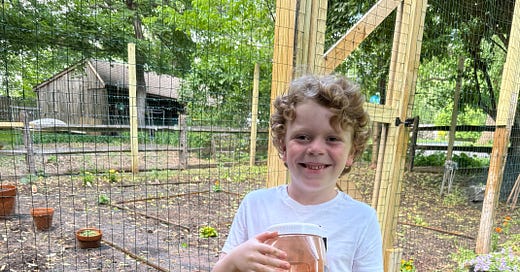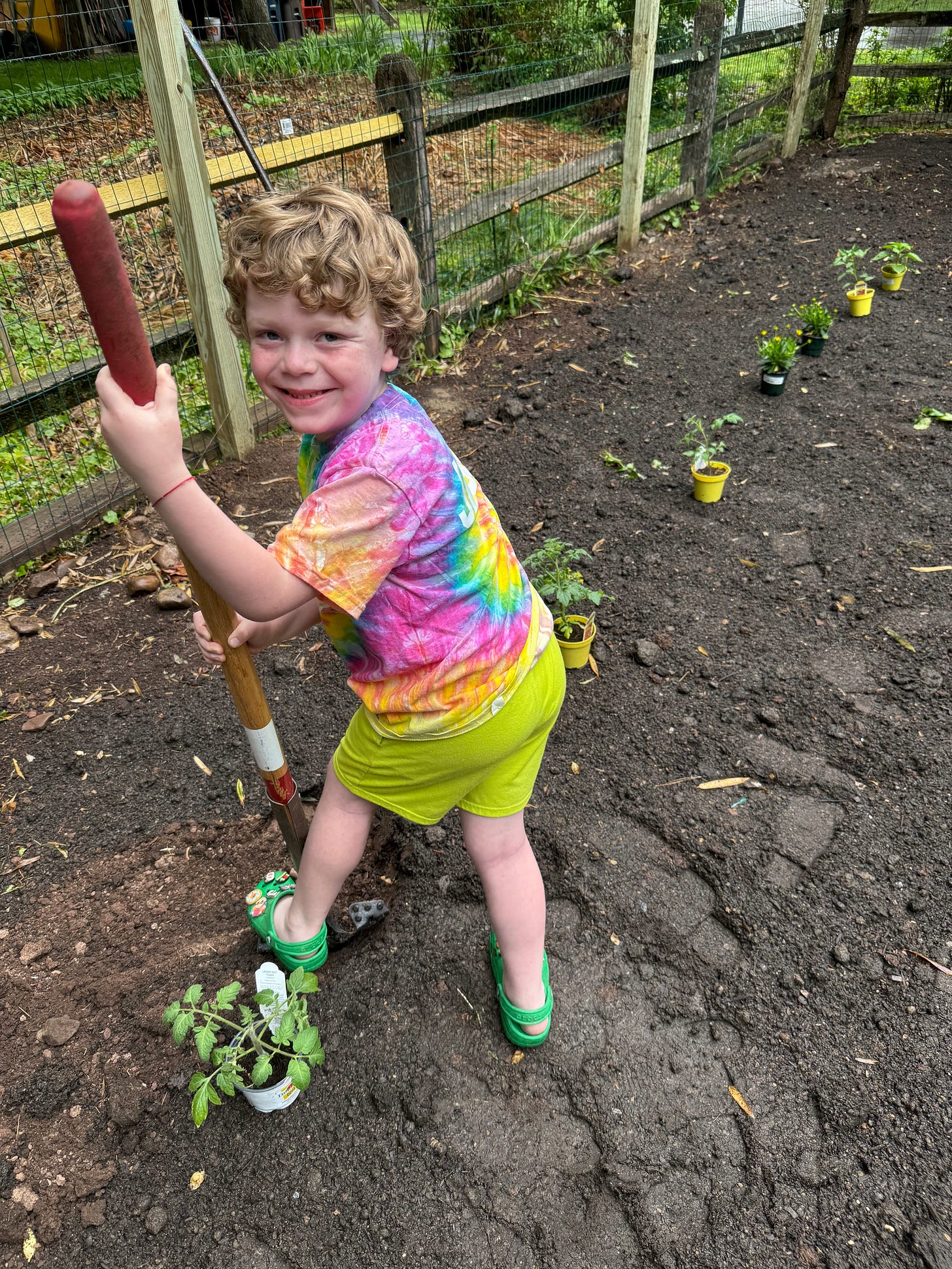New season. New garden fence. Same us.
We're experimenting with hyperlocal seeds and protecting them with pounds of cayenne pepper.
If it’s possible to measure the success of growing seasons by the number of Tiny Seeds posts, last summer was a down year.
With only three dispatches, I shared with you the optimism we had after erecting a “psychological fence” to ward off deer — and the disappointment we felt after a hot, dry spell lured deer past that faux fence. They chomped to the nub every juicy tomato plant, cucumber, and lettuce leaf in sight.
We had reached a fork in the soil, and we needed to decide whether to trudge ahead and try again, or to hang up our garden gloves and find another hobby.
We didn’t give up, but we did double triple down on deer deterrence.
First, we raised the height of our actual, non-psychological garden fence so that only a high-jump-champion deer could make it over. Second (Jagger’s idea), we planted lots of wildflower seeds outside the garden, so deer could nibble on those ornamentals and leave our vegetables and herbs alone. And third, we bought an industrial-size, 5-lb jug of cayenne pepper to sprinkle around the garden perimeter to keep groundhogs and squirrels away.
A friend turned me onto “Heirloom Vegetable Gardening,” the 1997 tome by William Woys Weaver. A food historian and master gardener who happens to live in Devon, Pa., Weaver spent years building up his grandfather’s collection of heirloom seeds that had been grown in the Pennsylvania Dutch country for generations, many of which you can buy today through Devon’s Roughwood Center for Heritage Seedways.
Weaver’s book inspired me to be more intentional than I had been about planning out this year’s garden, something that smarter, more successful gardeners have been doing for hundreds of years. And, yes, it prompted me to buy some of his seeds that smart, successful gardeners have been planting right here for hundreds of years.
Some of the heirloom highlights we planted from Roughwood this year:
Palatine June Bush Beans, a stringless snap bean that Pennsylvania Dutch communities have grown since the 1800s. They slice the pods into shreds to cook or pickle like sauerkraut.
Chalk’s Early Jewel Tomato, named after Norristown farmer James Chalk, who first grew it in 1899. Its well-balanced flavor is often described as not too tart, not too sweet.
Tennis Ball Lettuce, a favorite of Thomas Jefferson at Monticello, a light-green Bibb-like variety that is allegedly (per T.J.) easy to grow.
Brown Dutch Winter Lettuce, one of the rarest 18th century lettuces in Roughwood’s collection, it should get a bronze tint when the weather gets cooler.
Yellow Hinkelhatz Pepper, a spicy heirloom pepper mentioned as early as 1832 as ideal for pickling or hot sauces. The ripe pods are shaped and sized like chicken hearts: hinkelhatz in Pennsylvania Dutch.
The Palatine beans are off to a great start, and so are some of our zucchini, squash, and cucumber seeds. Time, water, and TLC will see how the rest of the garden catches up (really hope to share more than three dispatches this summer!). The high fence makes me hopeful, and the red hue of cayenne makes me think this is going to be our year of bounty.
Until next time — thank you for reading!







You are carrying on the tradition of Our forefathers of forging ahead through seemingly
impossible odds and I believe Your non-compromising attitudes will yield bountiful Crops and at the same time You are
reviving ancient seeds! Bravo
Very informative. Look forward to the next post.